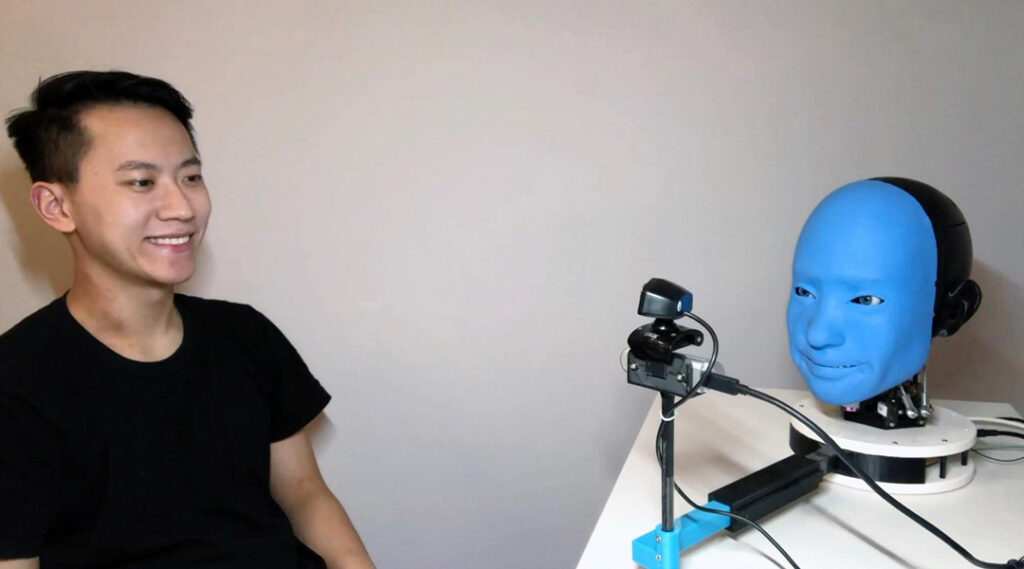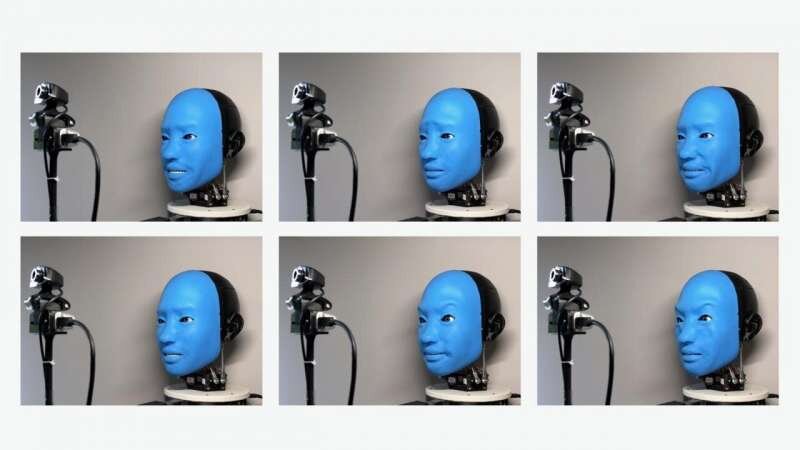EVA, the Robot That Smiles Back
Researchers are always looking for ways to build trust between robots and humans, especially if the robots are equipped with artificial intelligence.
One of the ways researchers approach the problem is by creating a robot that can make the right reactive human facial expressions, which is essential when robots work with humans or caregiving co-workers.
Columbia Engineering’s Creative Machines Lab recently released their research material on developing a new robot called EVA. It is an autonomous robot that has an expressive and soft face. The robot, which is just a head at the moment, can respond to humans around it by matching their expression. The researchers will present EVA at the 2021 IEEE International Conference on Robotics and Automation on May 30, 2021. The conference, which will take place in Xi’an International Convention and Exhibition Center in China, will last until June 5, 2021.
Non-verbal communication
The researchers have long been interested in nonverbal communication, which has more impact than the spoken word. The human face is very expressive, and it can convey a wide range of subtle emotions.
Many robotics researchers believe that robots will be more integrated into the lives of humans as advancements in the field continue to grow. However, this is still the factor of trust.
People are still emotionally detached from AI-powered smart-home speakers or cloud-based chatbots.
The creation of EVA
The researchers at the Creative Machines Lab at Columbia Engineering worked for five years to develop EVA. The idea took shape as they noticed that the robots in their labs are staring back at them with their plastic eyes. The director of the Creative Machines Lab and professor of mechanical engineering, Hod Lipson, explained that he noticed people and enterprises are humanizing their robots by giving them a name or making them wear some human accessories.
It made them wonder if it is possible to create a robot with a responsive and expressive human face.
Challenges of creating EVA
They patterned EVA from the facially animated Blue Man Group. Right now EVA can express six basic human emotions: surprise, sadness, joy, fear, disgust, and anger. It is also capable of displaying some nuanced emotions using motors and cables that make up its artificial muscles.
It was a huge challenge for the engineers because they have to design a compact system that will fit inside EVA’s skull. They relied on 3D printing to create parts with complex shapes. As they go through weeks of experimentation, they noticed that EVA, who has a blue face, managed to look upset, frown, and smile. It even surprised Lipson when he was taking a breather when EVA gave him a friendly smile. Although he knew that it was a mechanical reaction, he cannot help but smile back.
After perfecting EVA’s mechanics, the researchers moved on to program the AI that would guide the robot’s facial movements. EVA uses deep learning AI to be able to read and mirror the expressions.
EVA went through many trial and error so it can mimic the different facial expressions of humans. EVA taught itself by watching its videos.
With the use of deep learning neural networks, EVA’s brain masters two aptitudes. It learned to use its complex mechanical muscles to generate appropriate facial expressions. Secondly, it learned what kind of face to make by reading the faces of human near it.
By watching and learning hours of video footage as it makes various facial expressions, EVA learned to use its neural networks to work with its muscle motion.
The researchers state that EVA is still a lab experiment but they already see its potential applications. They are looking forward to seeing EVA become a useful robot in homes, schools, hospitals, and workplaces.

